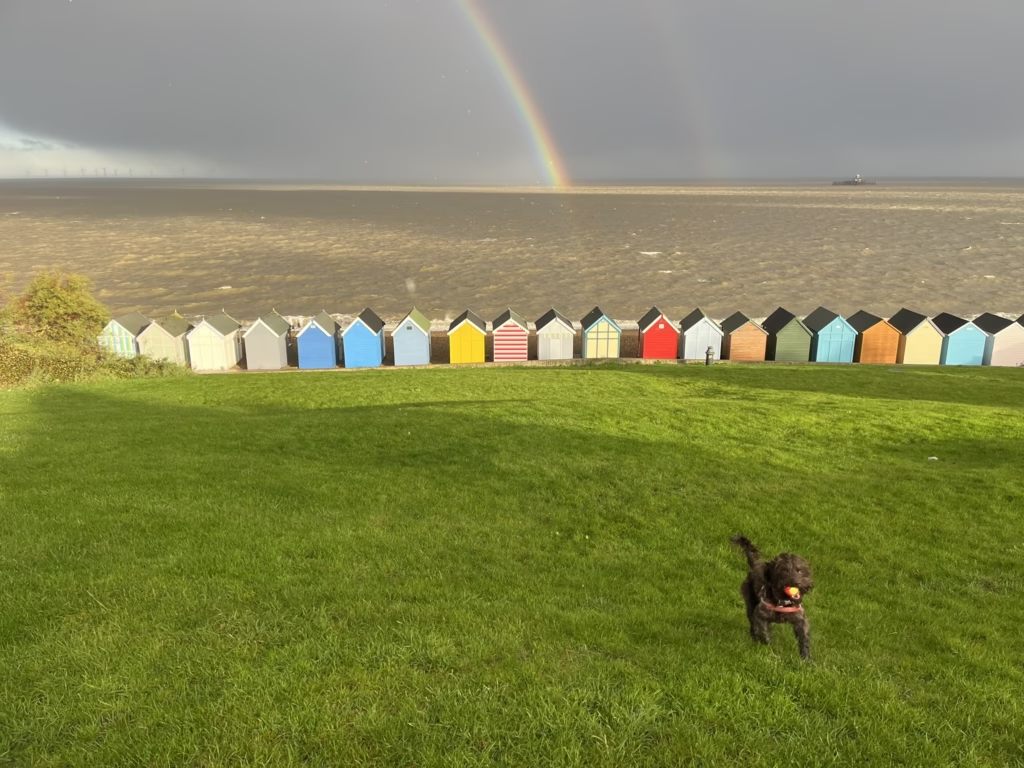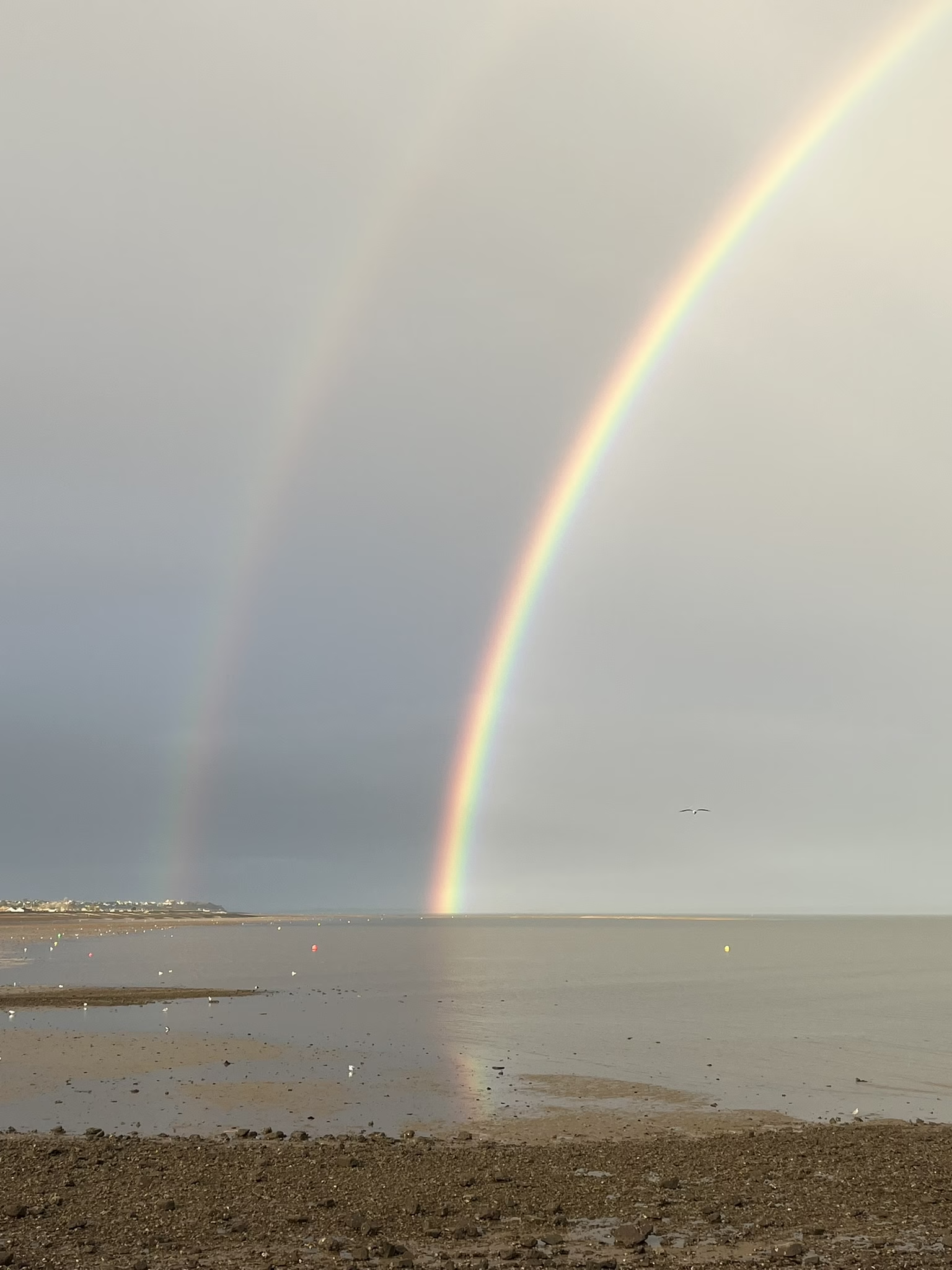It’s November, I’m walking the dog early along the sea shore at Herne Bay. I am walking from the town towards Hampton pier. The sun is rising in just over land and to the east, the weather is showers with clear spells and over the Swale is a brilliant rainbow display. I get the best view of the show from Hampton Pier.
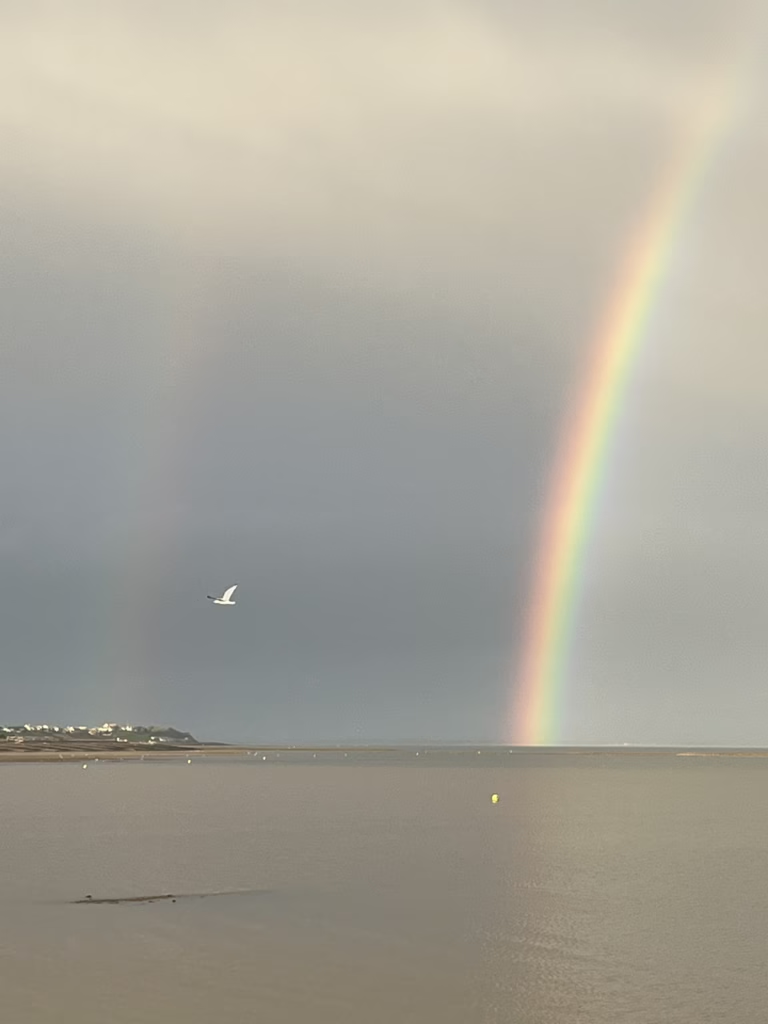
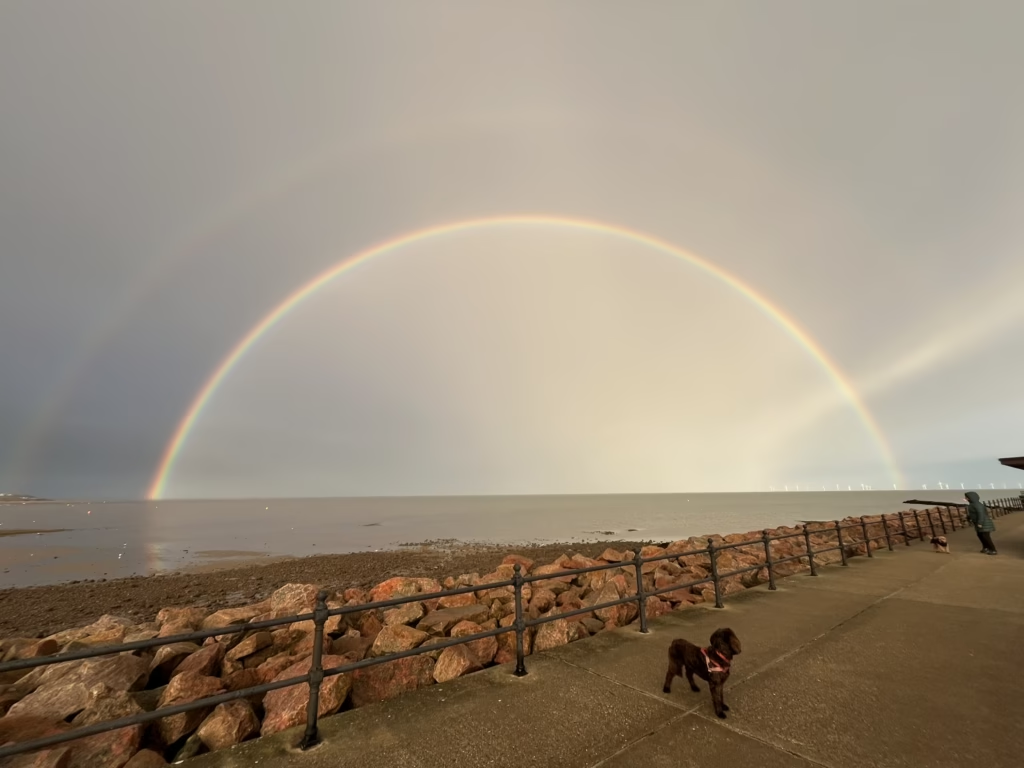
It turns out that this geometry it ideal for rainbow spotting.
Rainbows are formed when sunlight is refracted, reflected and dispersed inside water droplets producing the Pink Floyd album cover spectrum of colours.
In more detail, sunlight enters a raindrop and because water is denser than air the light slows and bends (refraction). Different wavelengths (colours) bend by different amounts; red least, violet most. The light then reflects off the inner surface of the droplet before being refracted again on exit, further separating the colours. The light colours are dispersed with each emerging at a slightly different angle, 42o for red and 40o for violet. The rainbow is always centred at the antisolar point, directly opposite from the Sun from the observer.
That clears up the science, but a diagram always helps.
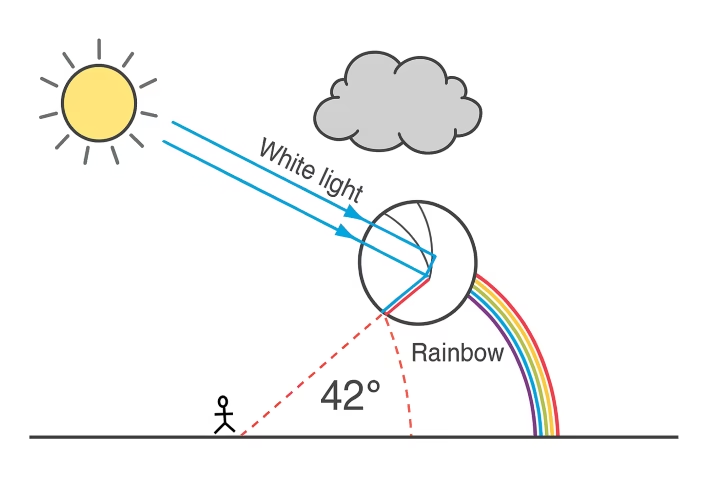
Double rainbows are caused by two internal reflections with the second arc having reversed colours.
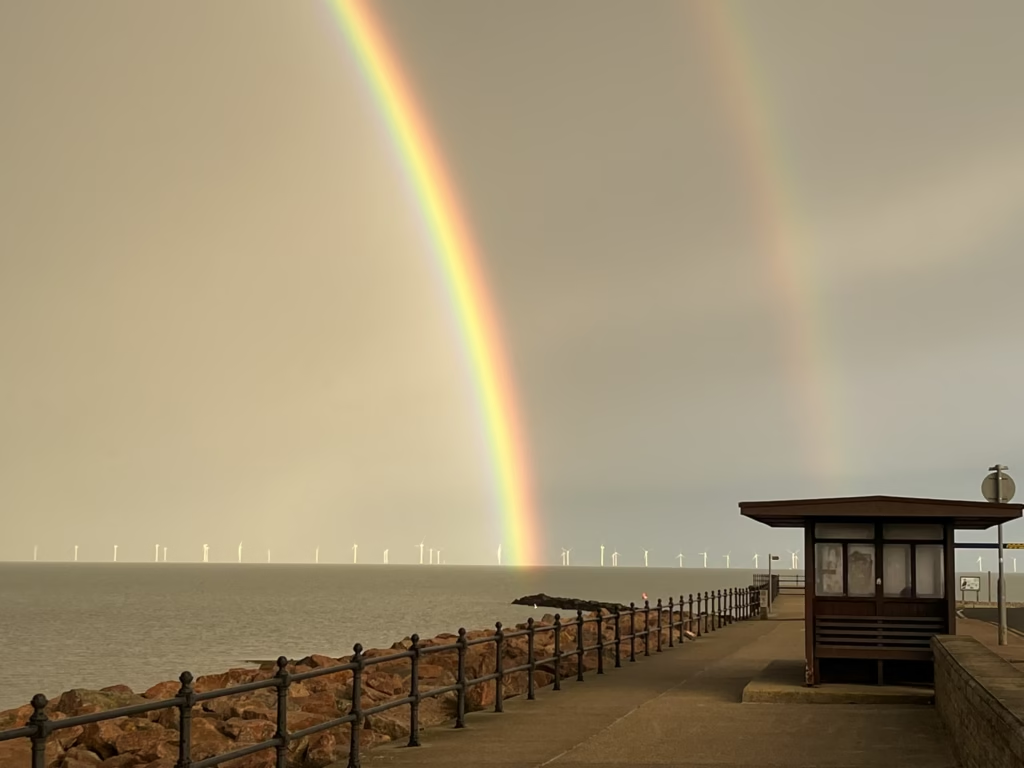
Rainbows have been a feature of walks recently. Take this one, seen later in the day and looking in a more northerly direction.
